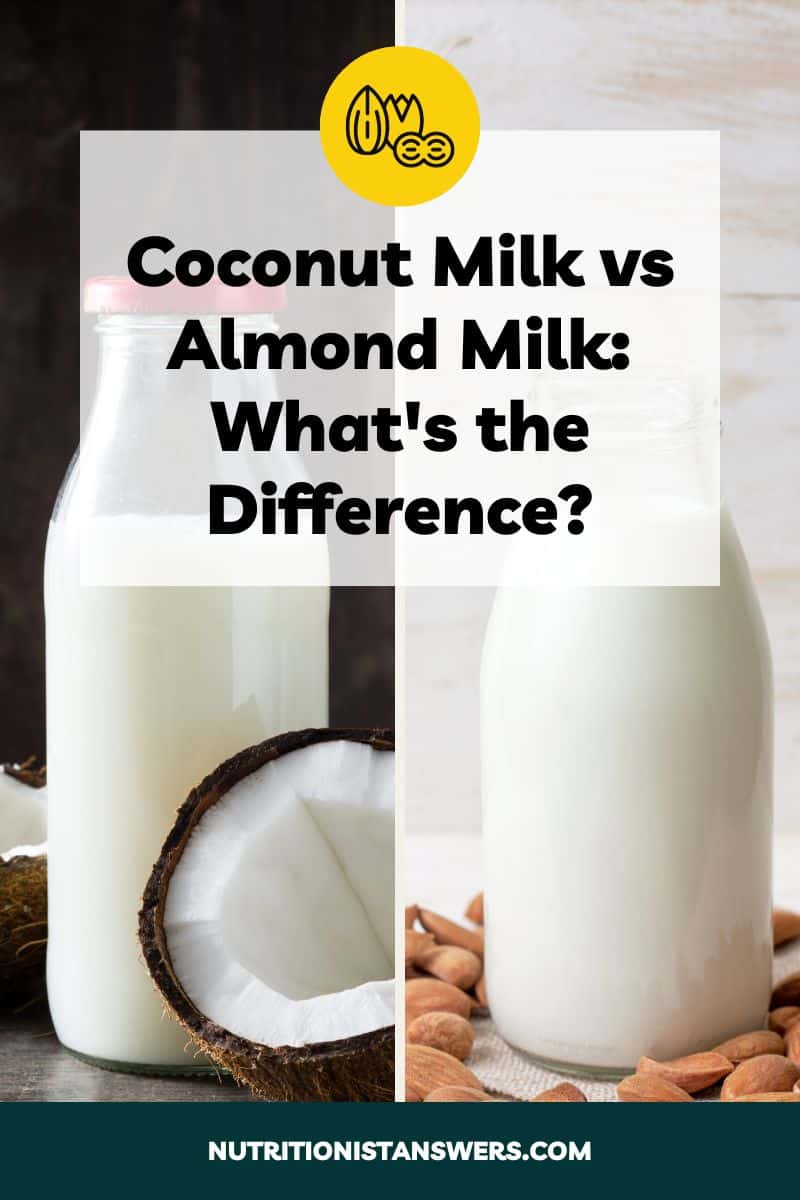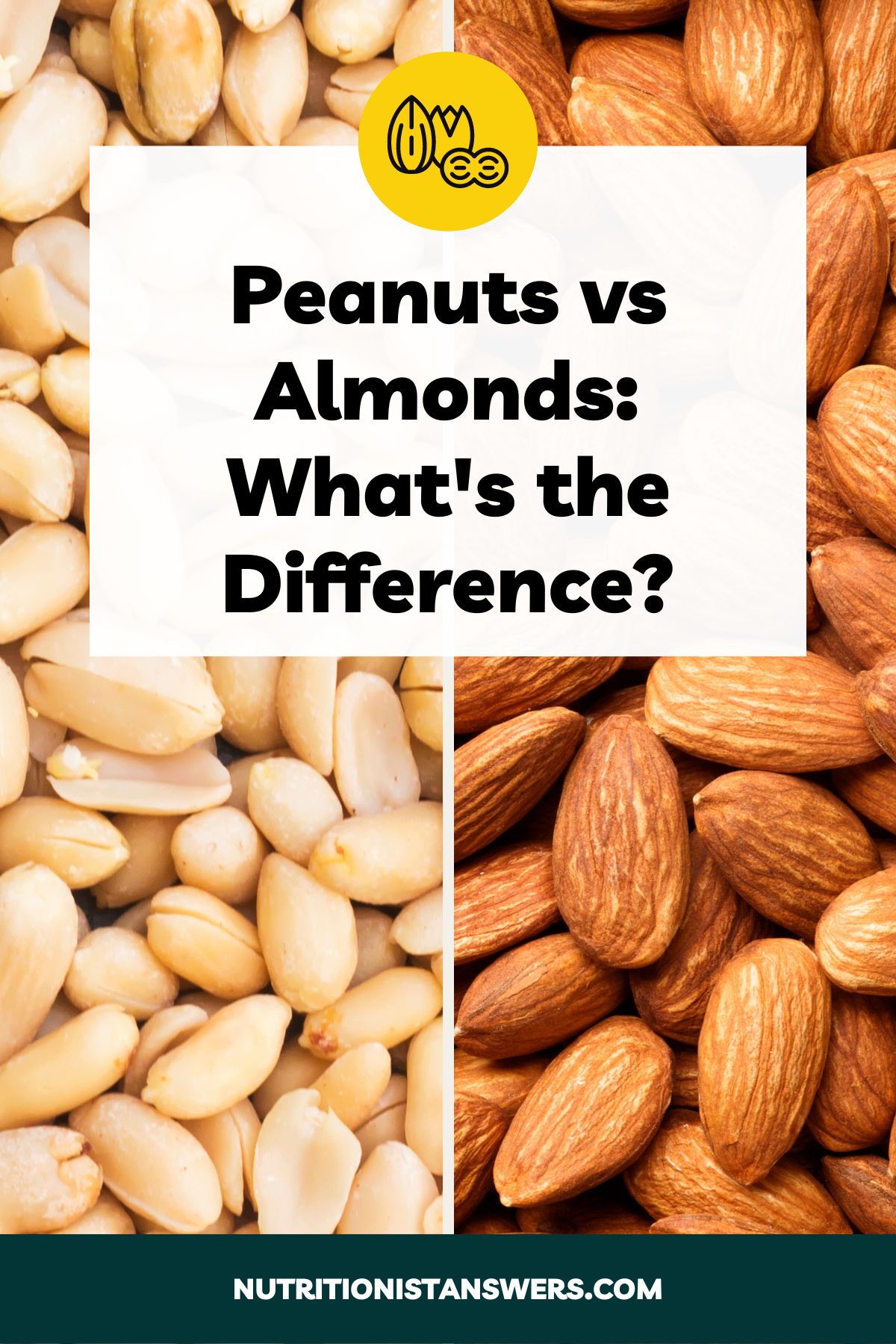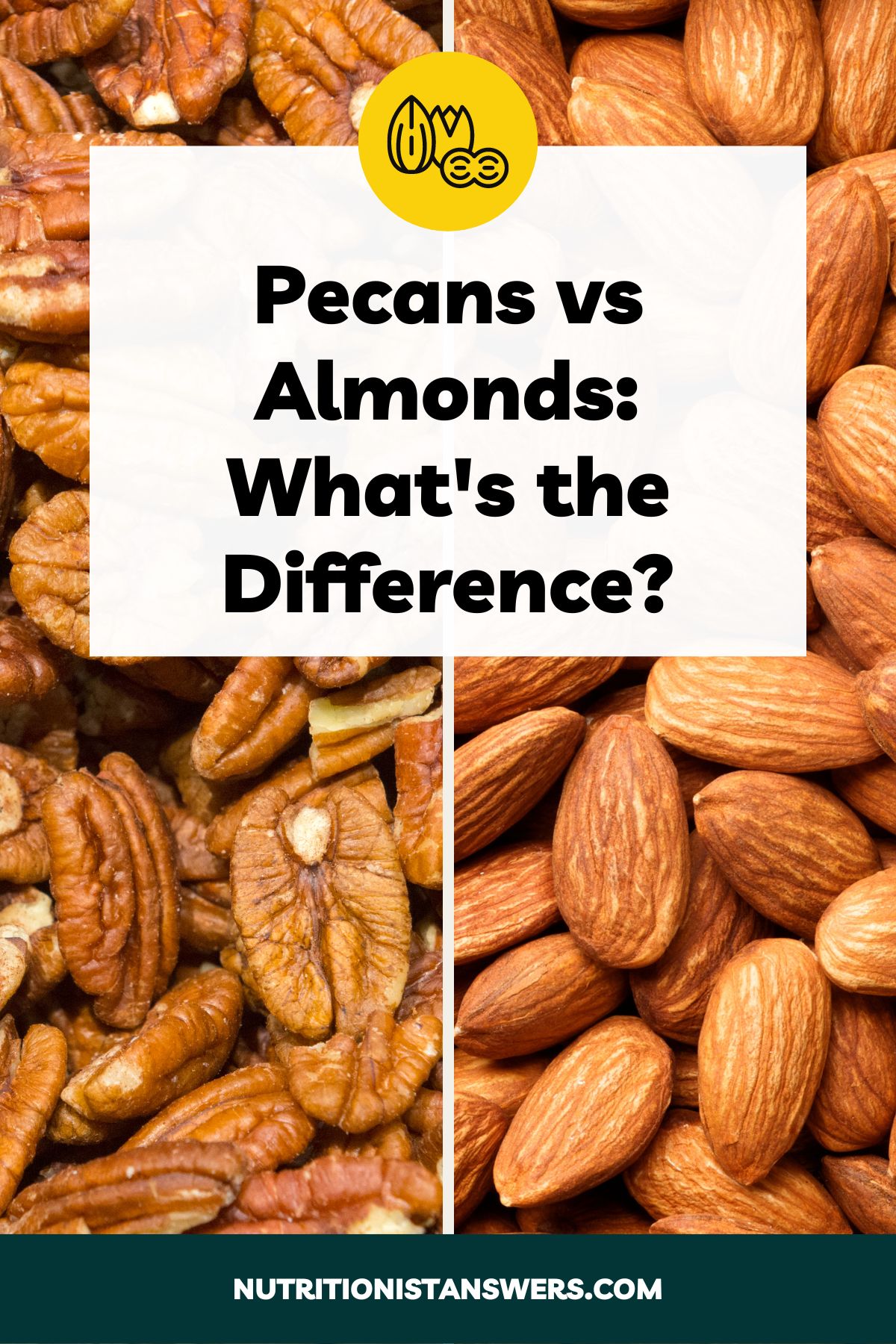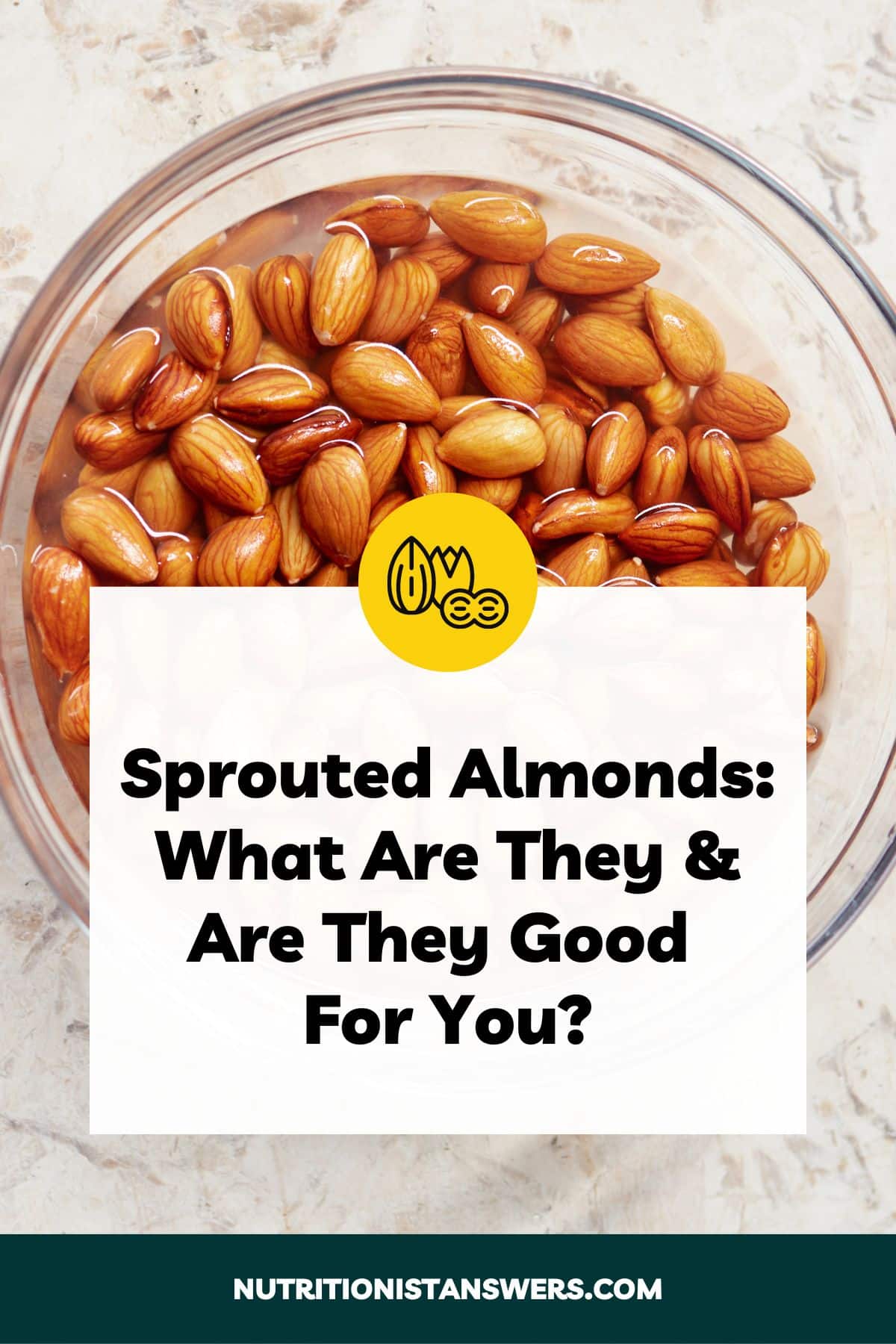Coconut milk and almond milk are two popular plant-based milks that can be used as substitutes for cow’s milk.
Both are dairy-free, vegan options that offer health benefits. However, there are some key differences between them that may make one better suited for particular uses than the other.
In this article, we will look at the differences between coconut milk and almond milk in terms of nutrition, taste, available forms, and uses.
Please note that this article contains affiliate links. If you click one of these links and make a purchase, we may earn a commission. As an Amazon Associate, we earn from qualifying purchases.
Flavor comparison
Coconut milk is slightly sweet and has a distinct fruity and tropical flavor with a hint of nuttiness. Its strong coconut taste can sometimes overpower other flavors in dishes.
Almond milk is less sweet and more bitter, with a subtle nutty flavor. Its mild taste can make it a suitable substitution for dairy milk in recipes.
Both milks have flavors that pair well with sweet and savory ingredients alike.
Nutrition comparison
The nutrients in almond milk and coconut milk vary widely depending on how many almonds or how much coconut flesh is used to make the milk and how they are processed.
For example, almond milk can contain as little as 2% or up to 20% almonds (1, 2, 3). Popular store-bought products tend to be on the lower end of that range, while homemade versions are higher.
All of the naturally-occurring nutrients in almond milk come from the almonds, so products made with fewer almonds will be lower in most nutrients.
Likewise, there are major nutritional differences between carton coconut milk and canned coconut milk, because they are made with varying amounts of coconut flesh.
In canned coconut milk, coconut flesh is the main ingredient, and only small amounts of water are added. Because of this, it is quite high in calories and fat.
Carton coconut milk, on the other hand, is essentially a diluted version of canned coconut milk. It contains more water than coconut flesh, so it is lower in calories and fat.
To make up for the lack of nutrition, carton coconut milk and almond milk products are sometimes fortified with nutrients such as calcium and vitamins A, B12, C, D, and E.
They may also include additives, like oils and gums, that act as emulsifiers and thickeners. These ingredients contribute a small amount of fat and fiber to these products.
Here’s a side-by-side comparison of the calorie and macronutrient content of almond milk, carton coconut milk, and canned coconut milk based on an 8-ounce (1-cup) serving size:
| Nutrient | Lower-quality almond milk (8 oz) (4, 5, 6) | Higher-quality almond milk (8 oz) (7, 8, 9) | Carton coconut milk (8 oz) (10, 11, 12, 13) | Canned coconut milk (8 oz) (14, 15, 16) |
| Calories | 30-35 | 70-130 | 40-50 | 360-420 |
| Protein | 1 gram | 2-5 grams | 0-1 gram | 2-3 grams |
| Fat | 2-3 grams | 6-11 grams | 4-5 grams | 36-42 grams |
| Saturated fat | 0 grams | 0-1 gram | 4-5 grams | 33-36 grams |
| Carbohydrates | 0-1 gram | 3 grams | 1-2 grams | 6 grams |
| Fiber | 0-1 gram | 0-3 grams | 0 grams | 0 grams |
| Sugars | 0 gram | 0-1 gram | <1 gram | 3 grams |
Calories
Carton coconut milk and lower-quality almond milk are similarly low in calories. They provide between 30 and 50 calories per 8-ounce (1-cup) serving.
Higher-quality almond milks offer 70 to 130 calories due to their higher almond content.
Canned coconut milk is the highest in calories, with a whopping 360 to 420 calories per cup.
Because of its high calorie content, canned coconut milk is typically consumed in smaller portion sizes. For example, a ⅓-cup serving provides 120 to 140 calories.
Protein
Almond milk and coconut milk provide about the same amount of protein.
Canned coconut milk and higher-quality almond milks contain 2 to 5 grams of protein per 8-ounce serving.
Meanwhile, carton coconut milk and lower-quality almond milks contain less protein — 1 gram or less per serving — because they are more diluted.
Both almond milk and coconut milk are low in protein compared to cow’s milk, which offers 8 grams per 8-ounce serving (17).
Fat
Canned coconut milk is much higher in fat than almond milk and carton coconut milk. An 8-ounce serving offers 36-48 grams, which are primarily saturated fat.
Because it is so diluted, carton coconut milk provides up to 96% less fat than canned coconut milk at 4 to 5 grams per serving.
Silk, Almond Breeze, and other low-quality brands of almond milk are low in fat, providing 2 to 3 grams per serving.
High-quality almond milks, like Elmhurst, can contain up to 11 grams of fat per serving — that’s still about 20-30% less fat than canned coconut milk.
Carbohydrates
Both almond milk and coconut milk are low in carbohydrates.
Canned coconut milk is the highest in carbs, with 6 grams per 8-ounce serving. Meanwhile, almond milk and carton coconut milk offer 3 grams or less.
Almonds contain 30% more fiber than coconut flesh, but much of the fiber gets strained out during processing. Because of this, coconut milk contains no fiber, while almond milks can contain a few grams per serving.
MALK Unsweetened Almond Milk is the highest-fiber almond milk we could find, with 3 grams of fiber per 8-ounce serving.
Keep in mind that sweetened versions of almond milk and coconut milk will be higher in carbohydrates due to added sugars.
Vitamins and minerals
Many brands of store-bought almond milk are fortified with calcium and vitamins A, D, and E. Carton coconut milk is fortified with the same nutrients, with the addition of vitamin B12.
Canned coconut milk and unfortified almond milks are not fortified but are naturally rich in minerals, such as potassium and magnesium.
Here’s a side-by-side comparison of the vitamin and mineral content of unsweetened almond milk, carton coconut milk, and canned coconut milk, based on a 1-cup (8 oz) serving size. We’ve included both fortified and unfortified versions:
| Nutrient | Almond milk, unsweetened, unfortified (8 oz) (7, 8, 9) | Coconut milk, canned, unfortified (8 oz) (18) | Almond milk, unsweetened, fortified (8 oz) (4, 5, 6) | Carton coconut milk, unsweetened, fortified (8 oz) (10, 11, 12, 13) |
| Vitamin A | Not listed | 0 mcg (0% DV) | 140-200 mcg (16-22% DV) | 0-270 mcg (0-30% DV) |
| Vitamin B12 | Not listed | 0 mcg (0% DV) | Not listed | 0.6-3 mcg (25-125% DV) |
| Vitamin D | 0 mcg (0% DV) | 0 mcg (0% DV) | 2-5 mcg (10-25% DV) | 2-5 mcg (10-25% DV) |
| Vitamin E | Not listed | Not listed | 4-7.5 mg (27-50% DV) | 0-3 mg (0-20% DV) |
| Sodium | 5-10 mg (<1% DV) | 29 mg (1% DV) | 140-170 mg (6-7% DV) | 25-120 mg (1-5% DV) |
| Potassium | 80-160 mg (2-3% DV) | 497 mg (11% DV) | 40-170 mg (1-4% DV) | 0-310 mg (0-7% DV) |
| Calcium | 40-70 mg (3-5% DV) | 41 mg (3% DV) | 440-470 mg (34-36% DV) | 130-470 mg (3-36% DV) |
| Magnesium | Not listed | 104 mg (25% DV) | 0-15 mg (0-4% DV) | 0-35 mg (0-8% DV) |
| Iron | 0-1 mg (0-6% DV) | 7 mg (39% DV) | 0.2-0.7 mg (1-4% DV) | 0-0.5 mg (0-3% DV) |
As you can see, almond milk and carton coconut milk contain similar amounts of vitamins and minerals. However, they are not considered “good” sources of these nutrients, because the milks are mostly water.
To get more nutrition from nut milks, you can purchase fortified versions, which are high in calcium and vitamins. These nutrients are not naturally found in high amounts in almonds or coconuts.
Canned coconut milk, on the other hand, naturally contains high amounts of minerals, particularly potassium, magnesium, and iron.
Keep in mind that we couldn’t find nutritional information about ALL of the vitamins and minerals found in almond and coconut milk, so we only included the nutrients that were listed on nutrition labels.
It’s likely that these milks also provide other vitamins and minerals that are found in almonds and coconuts like zinc and phosphorus (19, 20).
Available forms
1. Refrigerated (coconut milk and almond milk)
Both coconut milk and almond milk are available in refrigerated cartons. You can find them next to the other dairy-free milks in the milk cooler at the grocery store.
Coconut milk is usually plain or vanilla-flavored and unsweetened, while almond milk can be sweetened or unsweetened and comes in a variety of flavors, including vanilla and chocolate.
Refrigerated nut milks must stay refrigerated and are best if used within 7-10 days after opening.
2. Shelf-stable cartons (coconut milk and almond milk)
Shelf-stable cartons of coconut milk and almond milk can be found in the baking aisle or near the other canned milks.
Coconut milk and almond milk in shelf-stable cartons can be sweetened or unsweetened, and come in a variety of flavors.
These milks have a longer shelf life and don’t need to be refrigerated until opened. After opening, they should be used within 7-10 days.
3. Canned (coconut milk only)
Canned coconut milk can be found in the baking aisle or the international foods section of the grocery store and is also available at most Asian and Caribbean food markets.
It typically consists of coconut milk and water but sometimes includes additives such as guar gum (a thickener) and potassium metabisulfite (a preservative).
Unlike carton coconut milk, the canned version is always unsweetened and unflavored. It is sold in two different forms: regular (full-fat) or light (reduced-fat).
Canned coconut milk tends to separate while sitting on the shelf, leaving a thick layer of coconut cream on top and a clear-ish liquid underneath. Make sure to shake the can well before using.
Canned coconut milk is shelf-stable and should stay fresh for several years unopened. Use within 7-10 days after opening.
4. Powdered (coconut milk and almond milk)
Powdered versions of coconut milk and almond milk are simply coconut meat or almonds that have been ground into a fine powder. They sometimes include powdered sweeteners and flavors as well.
These products are usually sold in resealable packets or jars and are meant to be mixed with water, coffee, or other liquids.
Powdered coconut milk and powdered almond milk are shelf-stable and should last for up to 12 months when sealed and stored properly.
5. Concentrated (almond milk only)
Almond milk concentrate is essentially almond butter made from unroasted almonds and no other ingredients.
It allows you to make your own almond milk at home by simply blending 1-2 tablespoons of concentrate with 8 ounces of water.
Almond milk concentrate comes in jars or squeezable packets and can be purchased online. JOI and Wilderness Poets SPiN are popular brands.
Almond milk concentrate is shelf stable and should stay fresh for several months. Almond milk made from concentrate should be refrigerated immediately and used within 7-10 days.
6. Evaporated (coconut milk only)
Evaporated coconut milk is a thick and creamy product made by heating coconut milk until about 60% of the water has evaporated.
It can be used as a non-dairy replacement for evaporated milk in recipes and is available online and at some health food stores. Nature’s Charm is the only brand we could find.
Evaporated coconut milk is shelf-stable and can last for several months unopened. After opening, use within 3-5 days.
7. Sweetened condensed (coconut milk only)
Sweetened condensed coconut milk is coconut milk that has been cooked down and sweetened with sugar. It has a thick, syrupy consistency and is often used as a dairy-free substitute for condensed milk in baking and desserts.
Nature’s Charm is a popular brand that offers both regular and sugar-free versions of sweetened condensed coconut milk. These can be purchased at health food stores or online.
Sweetened condensed coconut milk is shelf-stable and will stay fresh for several years unopened. After opening, use it within 7 days.
8. Creamer (coconut milk and almond milk)
Coconut milk and almond milk creamers are concentrated versions of the milks that have been blended with other ingredients such as oils, flavorings, and sweeteners.
This results in a thicker product with a consistency similar to half and half, making it perfect for adding creaminess to coffee and tea drinks.
Look for almond milk and coconut milk creamers in the refrigerated section of the grocery store, near the regular dairy creamers.
Coconut and almond milk creamers must be refrigerated and should be used within 7-10 days of opening.
Recommended uses
Coconut milk and almond milk can be used in many of the same ways.
1. As a beverage
Both almond milk and carton coconut milk can be enjoyed as stand-alone beverages.
Almond milk has a lighter taste that is closer to cow’s milk, while coconut milk is creamier and tastes very tropical.
Compared to cow’s milk, almond milk and carton coconut milk are lower in calories, fat, carbohydrates, and protein.
However, If you purchase fortified almond or coconut milks, they will contain around the same amount of calcium as cow’s milk — about 300 mg per cup (17).
Canned coconut milk is best used in smaller amounts (1/3 cup or less) to add creaminess to smoothies and coffee drinks.
2. In baked goods
Almond milk and carton coconut milk can serve as substitutes for cow’s milk in baking. For every 1 cup of dairy milk, use 1 cup of almond or carton coconut milk.
To replicate the natural sweetness of cow’s milk, consider opting for a nut milk product that has been sweetened.
For example, Silk Original Coconut Milk contains 5 grams of sugar per serving, while whole cow’s milk contains 12 grams of sugar per serving. You can add a couple of teaspoons of extra sugar to the recipe to make up for the difference as well.
Keep in mind that using almond milk or carton coconut milk in baked goods may result in a shorter cooking time, less browning, and a lighter taste. This is because these types of milk contain more water and less fat and protein than cow’s milk.
We don’t recommend using canned coconut milk to replace dairy milk, because it is much higher in fat. Instead, it’s a better substitute for heavy cream or butter in icings and glazes.
3. In savory dishes
Both coconut milk and almond milk can also be used in place of cow’s milk in savory dishes like soups, stews, curries, and casseroles.
Coconut milk is the better option for curries and other dishes that require a creamier consistency or tropical flavor, while almond milk is better for dishes that need a lighter, more neutral taste.
When using almond or carton coconut milk in savory dishes, be sure to opt for an unsweetened or lightly sweetened variety, and stay away from flavored products.
To replace dairy milk with almond milk or carton coconut milk, use a 1:1 ratio. If using canned coconut milk, you may need to reduce the amount unless you want a creamier dish.
Final thoughts
Coconut milk and almond milk are popular dairy-free milk alternatives. Almond milk is thinner and has a subtle nutty flavor, while coconut is much creamier and tropical-tasting.
Carton coconut milk and almond milk provide a similar amount of calories, carbohydrates, protein, and fat. Fortified versions are also good sources of calcium and vitamins A, D, and E.
Canned coconut milk is much higher in calories and fat than carton coconut milk and almond milk. It is also a rich source of potassium and magnesium.
Almond milk is primarily sold in refrigerated or shelf-stable cartons, while coconut milk is mainly sold in cartons or cans.
Both milks can be used in similar ways. However, coconut milk is ideal for curries and creamy desserts, while almond milk is better suited for smoothies and baked goods.
Interested in how almond milk compares to other milks? Check out our articles on Almond Milk vs Cashew Milk and Almond Milk vs Skim Milk.
Amy Richter is a Registered Dietitian Nutritionist based in Missouri. She is an experienced nutrition writer and medical advisor for Healthline and Medical News Today. Amy is passionate about all things food-related and enjoys translating complex science into easy-to-understand articles.





